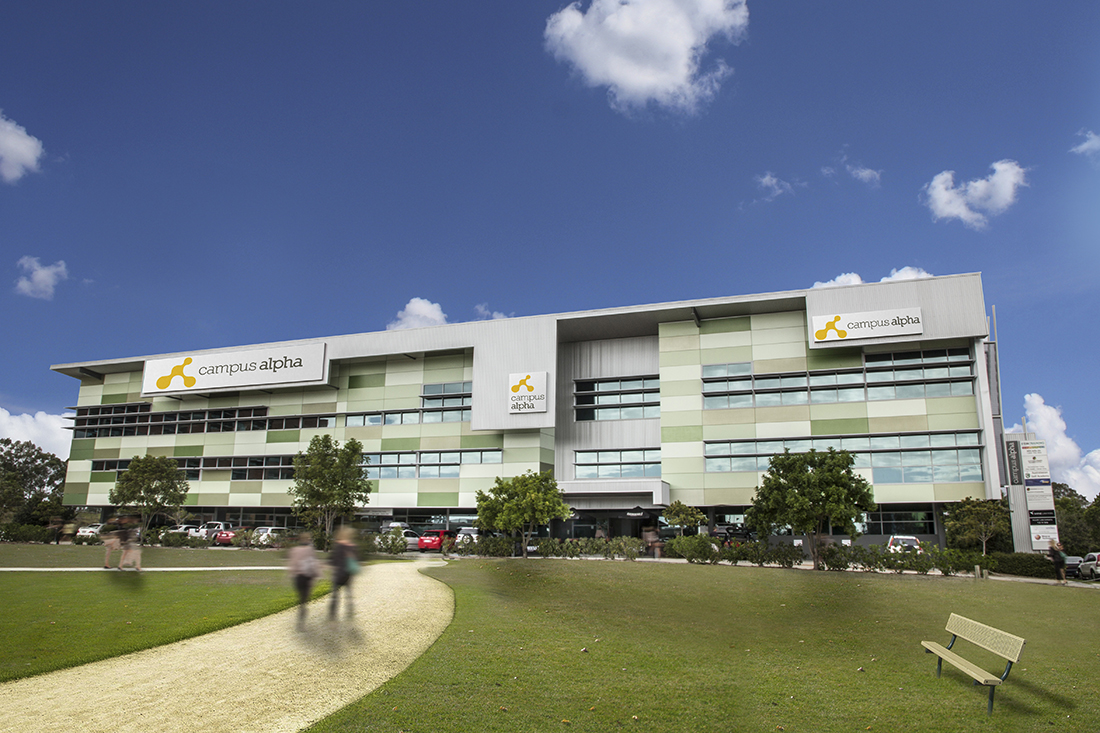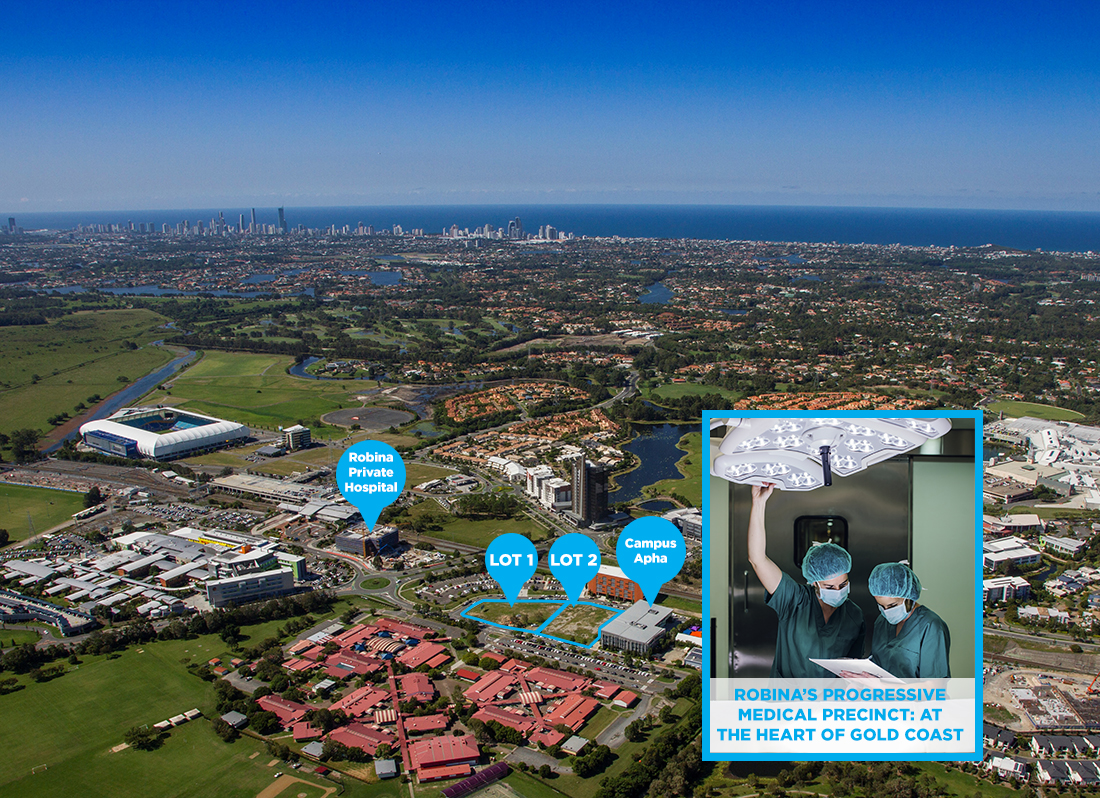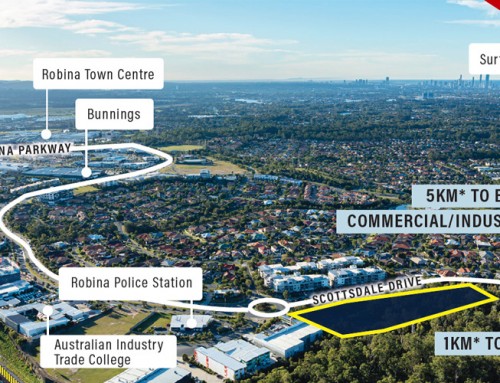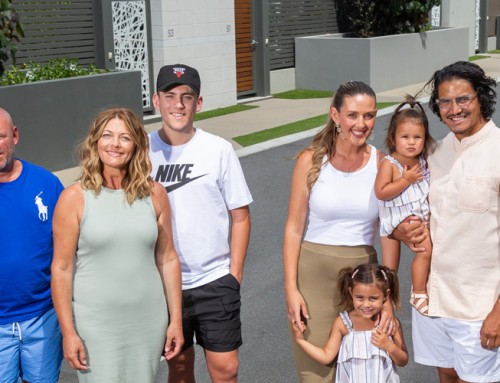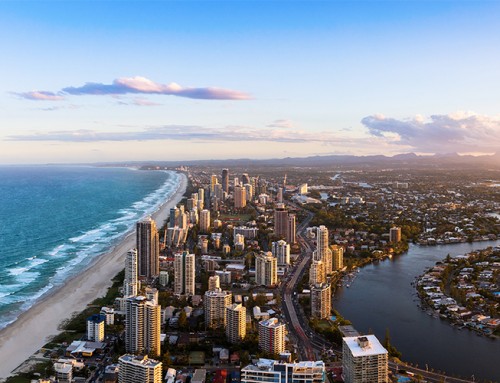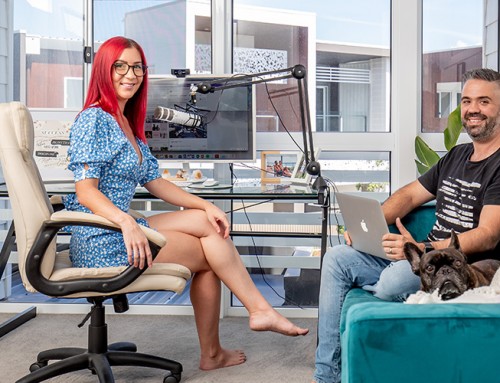The billion dollar Australian Unity Healthcare Property Trust (HPT) has acquired two medical properties in Robina for $30 million from master developer Robina Group, bringing its total investment in the area’s health hub to $64 million.
The $30 million transaction included acquisition of the Campus Alpha building for $26.225 million. The 4,404 square metre building is fully occupied and has a net property income of $2.02 million per annum, which represents a yield of 7.7 per cent.
The three level building was developed as a medical and government services office facility and sits within the rapidly expanding Robina medical hub.
Additionally, a 3,164 square metre site located adjacent to Campus Alpha, has been purchased by HPT for $3.77 million.
The new acquisitions follow the purchase by HPT in April of neighbouring land at Lot 1, Campus Crescent, Robina, for $3.92 million from Robina Group. HPT also own the Robina Private Hospital, which is currently under construction, with the 30 million facility scheduled to open in October this year.
Chris Smith, head of healthcare property, said the latest acquisitions brought together plans for developing a significant healthcare precinct at Robina.
“The healthcare precinct at Robina, currently anchored by the Robina Hospital and Queensland Health’s Robina Health Precinct, is a premium, emerging location on the Gold Coast for health related investment.
“Robina is a fast-growing suburb in the Gold Coast region of Queensland, with a population of more than 600,000.
“The close proximity of the soon to commence Primary Health Care medical centre, along with the site at 34 Investigator Drive and the Campus Alpha building, will provide flexibility to develop additional health related space and car parking to meet future demand for the services provided in the precinct.”
Mr Smith added that Australian Unity continues to be an active long term investor in building and improving Australia’s social infrastructure.
“As the demand for healthcare services increases in line with Australia’s rapidly ageing population we have prioritised expanding, improving and upgrading the HPT’s existing hospitals and medical centres to meet this demand.
“HPT is Australia’s largest healthcare property fund, and is Australian owned with decisions made locally. Its portfolio of 39 health-care related properties across Australia includes hospitals, medical clinics, day surgeries, consulting rooms and specialist centres such as radiology and pathology,” Mr Smith said.
The wholesale version of the HPT has returned investors 10 per cent per annum over the last ten years and its one year return to 30 June 2016 was 20 per cent. In April this year, the fund temporarily suspended applications given the increasingly strong demand from investors and will re-open the fund to new applications as it progresses its development program.
Robina Group director Tony Tippett said HPT’s $64 million investment in Robina was a landmark demonstration of confidence and one that would generate national awareness of the fast-growing health and medical hub.
“Robina has become a premier health precinct for not only Gold Coast City but South East Queensland and the eastern seaboard, with significant investment from both the public and private sectors in recent years,” he said.
“To have an industry leader of the calibre of HPT focusing significant investment here will see Robina continue to solidify its reputation as a centre for key services and innovation as well as research and development.”
Mr Tippett said HPT’s stake adds to the more than $1 billion in investment already underway in Robina across new commercial, retail and residential development and public infrastructure, required to meet high demand.
“Gold Coast City’s population has tripled in the last 20 years and is projected to double again to 1.2 million by 2050,” he said.
“Robina’s location at the geographical heart of the city places it at the centre of this exponential growth, ideally positioned as a key attractor of health innovation, smart business, education, technology, sports and tourism.”

